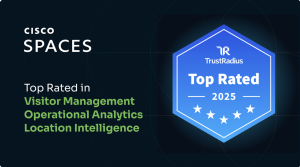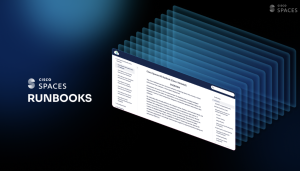
Did you know that on an average, around 44 per cent of seats remain vacant in an office? And with the option of remote working in a hybrid workplace, chances are this number will only increase, unless office space is optimized. Hybrid work is all about providing employees a flexible and safe space to work in, while also amping up productivity, increasing sustainability and optimizing resource utilization. And given that the biggest resource in an office is its physical space, office space optimization is as crucial to hybrid work as is safety and productivity.
Challenges in manual Space Optimization
When it comes to office space optimization, there are many challenges that facilities teams face. For instance, determining the optimal space required for the workplace. With a mix of employees working from the office and working remotely, it becomes difficult to assess how much space one can cut back on. Factors such as safety compliance, employee preferences and actual room utilization also come into play here. And it falls on facilities teams to take all these variables into consideration and evaluate them expertly, in order to be able to successfully optimize office space.
This is especially difficult when enterprises seek out low-cost, manual space optimization options. This involves facilities manually recording footfalls, analyzing usage of desks and rooms, to arrive at optimization decisions such as repurposing or reducing space. Needless to say, manual space optimization is not only slow, but also inefficient, when compared to smart technologies that utilize historical space usage metrics to plan space optimization.
The role of space utilization metrics in optimization
With space utilization metrics, facilities teams have an accurate overview on the occupancy of every room, desk and other office assets. Real-time data on occupancy and dwelling times is available and an accurate, historical record is maintained. This data can be filtered down to view usage patterns for any particular time frame, such as a specific day of the week or even a period of days or months.
For instance, if a conference room is being used only on Mondays, it can be repurposed as a recreational space on other days of the week. Similarly, arrangements can be made to relocate conference rooms or desks in such a way that they are closer and more accessible to those who use them frequently.
Why Office Space Optimization is integral to Return to Work
1. Adapting to Hybrid Work
With part of the workforce working remotely in a hybrid work setup, it becomes easier to optimize space without disrupting operations. Besides, space optimization is essential in a hybrid workplace, in order to improve the employee experience and facilitate adapting to the new way of work. When the use of office space is optimized, employees enjoy better flexibility through hotdesking. Through occupancy monitoring, facilities teams also gain the ability to meter days of high traffic and low traffic, thereby allocating space accordingly and improving the employee experience.
2. Gain from a higher ROI (Return On Investment)
Space optimization also makes business sense, granting enterprises a high ROI (Return On Investment), and also the ability to optimize an entire real estate portfolio from a single dashboard. This makes office space optimization especially crucial for enterprises with leases on multiple facilities. By gaining visibility into which areas of a building are underutilized and how those spaces may be improved in an effort to maximize usage, enterprises can optimize space and improve utilization. Even a five per cent improvement in space utilization can result in cost savings of $2.5 per sq.ft per year.
3. Ensuring Employee Safety, Health, and Wellbeing
Ensuring that the use of office space is optimized also gives employees an increased sense of safety. Optimized space, coupled with the ability to monitor air quality and other building wellness parameters, ensures that facilities teams have better control over the overall safety and health of the office space. With the ability to monitor the conditions inside their building, employees too enjoy a sense of security and wellbeing.
How Smart Workspaces works for Space Optimization
Cisco Spaces’ solution for hybrid workplaces is called Smart Workspaces. It uses a combination of Cisco networking hardware such as Catalyst and Meraki, with WebEx and IoT devices, to provide real-time air quality monitoring, location analytics, behavior analytics, occupancy/density monitoring and space usage metrics as well. These technologies, presented on an interactive rich map, helps facilities offer improved employee experiences and productivity, while maximizing the use of space and reducing spending in the long run.
The stackability and scalability of Smart Workspaces, means that it can adapt and expand with the enterprise. It also allows facilities to analyze occupancy, dwelling time and other space utilization metrics across multiple locations from a single dashboard. Simply put, with Smart Workspaces, facilities teams are equipped with all the right tools to undertake accurate, metrics-driven space optimization on a large scale, across multiple properties. And with an optimized space, enterprises also ensure they fulfill one of the primary functions of hybrid work – enhancing employee experiences.




